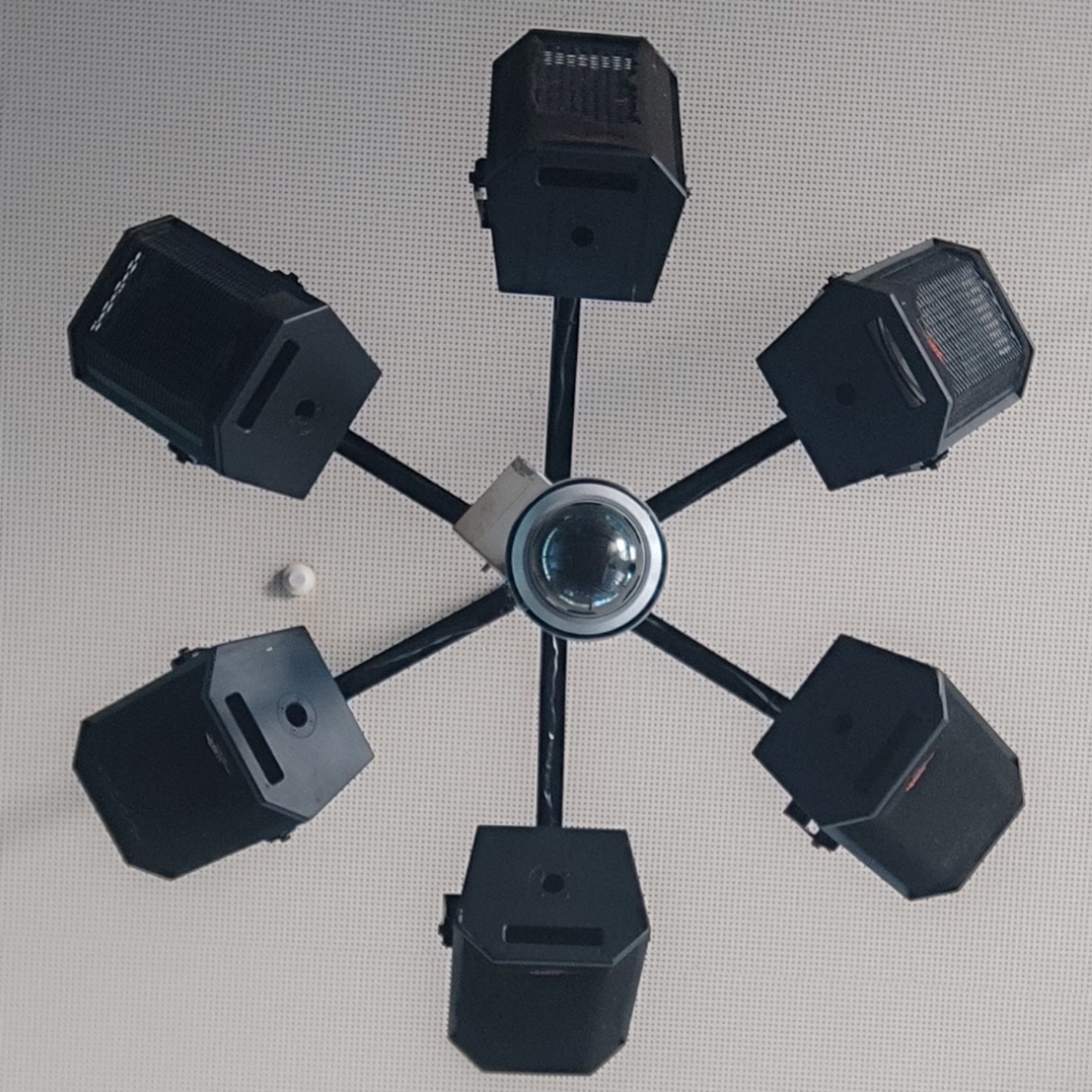Arch is aimed at people who know their shit so they can build their own distro based on how they imagine their distro to be. It is not a good distro for beginners and non power users, no matter how often you try to make your own repository, and how many GUI installers you make for it. There’s a good reason why there is no GUI installer in arch (aside from being able to load it into ram). That being that to use Arch, you need to have a basic understanding of the terminal. It is in no way hard to boot arch and type in archinstall. However, if you don’t even know how to do that, your experience in whatever distro, no matter how arch based it is or not, will only last until you have a dependency error or some utter and total Arch bullshit® happens on your system and you have to run to the forums because you don’t understand how a wiki works.
You want a bleeding edge distro? Use goddamn Opensuse Tumbleweed for all I care, it is on par with arch, and it has none of the arch stuff.
You have this one package that is only available on arch repos? Use goddamn flatpak and stop crying about flatpak being bloated, you probably don’t even know what bloat means if you can’t set up arch. And no, it dosent run worse. Those 0,0001 seconds don’t matter.
You really want arch so you can be cool? Read the goddamn 50 page install guide and set it up, then we’ll talk about those arch forks.
(Also, most arch forks that don’t use arch repos break the aur, so you don’t even have the one thing you want from arch)
A beginner to what, to pacman, to arch, to rolling distro, to linux, to unix, to a PC, to using man-made tools …
I made an installation to an old pc once, I though it would last a while, and since the users could barely understand what an on/off button does, they just wanted google and facebook, so it was a wm with two browsers, daughter already knew what chrome was, and in the login shell I wrote a script that each new day it booted it attempted pacman -Suy --noconfirm then once a week the cache was emptied and the logs trimmed.
That was before covid, a couple months ago I met her, she said it has been working fine every since.
So there is your dinner
PS Actually it wasn’t arch it was artix with runit but that is about the same
Meanwhile random people just using SteamOS and being happy.
yea, but I feel like it’s worth saying that steamdeck (where most of the steamos instances are) runs primarily in steam mode, and runs immutable OS by default so it’s pretty hard to actually mess that up. Plus steam manages most updates for you instead of you managing the updating yourself, which also helps remove the skill factor.
Android looks at SteamOS from the distance
Don’t know about Cachy but Endeavour is not even a fork. It’s just Arch with a fancy installer.
And nice gui apps, default settings, nice community and cool branding.
EndeavorOS is not automatic but you can set it up with one terminal command.
I’d just like to vent that these kind of discussions are one of the big turnoffs of the Linux community in general. People speak “in absolutes”.
You either do it this way or you’re a dumbass. You either use the distribution I like or you’re doing it WRONG. You shouldn’t use Arch because you’re not experienced enough, you should use Mint for an arbitrary amount of time before you graduate to the good stuff.
You friends get way too worked up over other people’s personal preferences and push your biased and subjective views as facts.
Is Arch Linux the right fit for a newbie to Linux? The right answer is “it depends”, not “never”. Would I recommend Arch to my mom? No. Would I recommend it to my programmer colleague who already lives in the Powershell? Sure, why not.
Is Arch Linux the right fit for a newbie to Linux? The right answer is “it depends”, not “never”. Would I recommend Arch to my mom? No. Would I recommend it to my programmer colleague who already lives in the Powershell? Sure, why not.
Yup, i had a lot of people tell me that arch wasn’t a good beginner distribution, and had some friends try to talk me out of it. But i was planning to move to Linux for over a year and had set up Linux servers in the past. Just hadn’t used one for my main PC. I’ve been on arch for over a month and it’s been fine. I still wouldn’t recommend it to every beginner but I’m not going to say it’s never appropriate.
I think the difficulty with Arch is not about using the command line, but about knowing the Linux ecosystem.
People coming from OS X or Windows probably don’t know the difference between a WM, or a DE or what Display server they should use.
They don’t know if they need to install a network manager or setup sudo on a new system.
These things come from experience of using a Limix system even a mainstream one like Ubuntu.
Different people deal with things in different ways. Some (most?) people feel like learning linux is undesirable or a chore, while others embrace the sense of discovery and exploring a new and exciting thing. After using Windows for decades I don’t want the same experience, I want something completely different.
Before I installed Linux I played a bunch on a virtual machine. I installed several distributions, desktop environments, hardware compatibility. I ended up landing on EndeavourOS more than a year ago. Never borked my setup, never had update problems, never had a problem I couldn’t solve (more like Arch Wiki solving it for me).
I like to learn things by doing things, I like to fail fast and learn from the mistakes. EndeavourOS provided the exact experience I was looking for and would recommend it to someone with a similar mentality. I wouldn’t recommend Arch (or arch based distros) to people who aren’t tech savy, but people make it seem more complicated and brittle than it actually is.
I know someone who was fed up with Windows recently, and they decided it’s finally time to switch to Linux. Me and another person recommended Linux Mint, but they got many other recommendations for Arch. They went with Arch, and it hasn’t gone boom yet, but I’m not sure if it’s a matter of time or what.
I have heard Arch is more “stable” these days than it used to be, but I’m not sure.
I use Ubuntu myself except for on my ThinkPad where I use Mint, and I’m gonna switch to Mint on my desktop eventually.
Once it’s installed Arch is just as easy to use as any other distro. It’s “unstable” because it’s rolling release, sometimes issues crop up with bleeding-edge updates, just keep an eye on the forums before updating.
I’ve only had to deal with a broken system a couple of times, both were 100% my fault, and both were fixable without reinstalling. Even when something breaks it’s pretty forgiving, as long as one is paying attention and not afraid of reading documentation.
sometimes issues crop up with bleeding-edge updates, just keep an eye on the forums before updating.
So to me, that sounds not ideal for someone new to Linux.
Depends on the person. Someone who just wants a stable desktop that works? No. Someone who wants to learn how Linux works, and likes to tinker? Yes.
I would, however, recommend Arch if you’re a Linux novice looking to learn about Linux in a more accelerated pace.
I would argue Gentoo is better suited for that. It is just compilation that can take a long time.
Linux From Scratch or Slackware too.
Bit of a different beast. Not something I would daily drive though. Slackware perhaps. But gentoo other then the docs being top notch and the learning experience being fairly streamlined. It is also a good distro for daily use.
Gentoo’s my daily driver.
Or Void Linux.
For novices Void is worse because it does not have the Arch wiki. The Void Docs are brief and you will inevitably end up reading the Arch wiki anyways, except you will run into Runit specific bs.
Runit specific bs? You mean being simple and sane? lol And yes reading documentation is true for both. Also be aware of context.
are there any good tutorials or something for void. I’m very interested because the name is cool but haven’t found a good resource for learning.
I’m very interested because the name is cool
Lol I love the honesty
I think their documentation is pretty solid, for everything else the reddit/internet searches can solve it. But as with EVERY DISTRO on this planet, the archwiki can be applied! You just need to know what are the differences from void to arch. (no systemd for example)
I’ll tell you, nothing bricks as hard or as irreparably as Windows. I have never had to actually reinstall Linux due to some problem (though it’s a good practice security-wise).
Even when you removed the french language pack?
idk I’m kind of a fucking idiot and I started with Manjaro.
I didn’t start with manjaro, but it was the only one that seemed to play nice with my system and programs out of the five or so I tried. I’ve never had an issue with it after 2 years, so… eh?
The real problem: Define beginner distro
Every user is starting from a different point. There is no such thing as a beginner distro. You can say this distro is good for people who can grasp the idea of a command line or this distro is good for people who have no idea command line interfaces exist, but that doesn’t differentiate between beginner friendly or not.
deleted by creator
Linux Mint.
MX is better than Mint.
AFAIK no systemd -> no flatpak -> don’t recommend to newbs. Say what you will about flatpak, but it is the official distribution method for some popular pieces of software and large GUI software generally works better through it (in my experience) - think Blender, GIMP etc.
No software worth its salt offers only flatpak installation. I don’t use flatpak at all and Blender works flawlessly. I’m not sure what a flatpak version could possibly do any better than the version I use.
I’m not sure what a flatpak version could possibly do any better than the version I use.
The official OBS flatpak supports more codecs and integrations than some distro packages.
Stability is also a factor, especially on rolling or cutting edge distros. Fedora RPM release of Blender did not work for me at all with an nvidia GPU, for example.
But we’re not talking about rolling or cutting edge distros. MX is based on Debian Stable. Also last time I checked (about a month ago) MX Linux does support Flatpak. Also also, you can enable systemd if you want, but seeing as we’re talking about a distro for complete beginners, I don’t think they’re going to notice, know, or care. Also also also, I really don’t care enough about this to drag it out into some protracted argument.
Download ventoy, slap a few distros on a usb stick, try them, use what you like.
nvidia GPU
No flavour of Linux works well with them. That’s the joke or something.
funnily enough, i see it as one of the advantages of arch, and a reason i’ll keep putting up with the constant updating for the forseeable future - nvidia support has gotten way better recently, and since arch has very recent packages i haven’t had nvidia issues in quite a while now.
Once it all lands in debian i’ll consider giving debian another shot on desktop… but that’ll take a while.
Debian SID?
also systemd is just assumed in 99% of Linux tutorials and questions.
That’s arguable, but I get where you’re coming from.
And then wonder why everybody having a good time with their nvidia on smooth wayland vs you on your
ancient, ok now only old Kernel since the last ubuntu upgrade, and outdated nvidia drivers.Oh wait, with mint, you are forced to use clunky Xorg aren’t you
I am sure that gives any noob the vibes of using a modern OS like windows/macOS /s
Do you use a modern kernel? And, do you use a multi touch trackpad? That only works on wayland well.
I personally see the difference in for example window movement Xorg VS wayland. And I have more artefacts from window manager if use Xorg BS when O use wayland.
Umm no. Xorg only knows keyboard and pointer devices
Everything must be put into one of those in hacky ways to work with Xorg, meaning you using a protocol for a device that can move itself, scroll and register clicks and keyboard to multitouch efects
This, for example, results in swiping on Xorg is just clicking a keyboard shortcut, while in wayland you can smoothly scroll for and back between the virtual desktops mid animations
I’m not sure a newcomer will notice the difference between xorg and wayland?
I did, before I knew what wayland is, I did some distrohopping (see path below), and recognised that sometimes it feels more nice than other times. First I thought it was just GPU driver stuff, but later learned that it was something called wayland that does something underneath your desktop management (didn’t know that there is another layer below at that time)
(mint->manjaro->manjaro(after it died once)->Opensuse TW(after manjaro died again)->Arch(because I liked installing from AUR more than from suse community hub)->EndeavourOS(because I don’t have time to do Arch manually and archinstall was to difficult/time consuming with dualbooting macOS)
If you have multiple monitors with different refresh rates, you’ll notice immediately.
Mint works like Windows and has a lot to offer any Windows 10 user who’s already using FOSS. And tbh Hypnotix alone justified the install of Mint for me. I got a great IPTV viewer, plus a PC that runs everything I want.
Note: I only regularly want Discord, Firefox, Endless Sky, OpenTTD, RetroArch, and LibreOffice. I’m sure everyone else has different goals.
Windows 10 doesn’t feel like a modern OS…
Then whatever a modern OS is under your model is not an OS I’m willing to use. I’ve seen Win 11. I’m going to stick with 10, as I stuck with XP through Vista, had a second machine with 7 through 8(.x), and then surrendered and used Win10 when the 32-bit Win7 machine finally stopped working for love or money.
Well that is fair and I am very glad that Linux still offers you what you need and that you are fine with using X and have (still) more compatibility like this 😇
Petulant counterpoint: SteamOS 3.0 is based on Arch and is a good newbie distro
But but but SteamOS!
2 requirements for arch:
- Not fearful of CLI
- Able to RTFM.
- Willing to spend a whole day on your first install
that’s it. That’s also not MOST PC users. Just suggest popos or mint or that one “gaming” distro and let them enjoy it.
If they want to nerd out after they’re used to Linux they will learn the CLI. If they want to, they’ll find Arch or whatever DIY/rolling whatever distro.
I started with EndeavourOS, which is basically Arch, and had a great experience.
I did have someone knowledgeable help guide me a bit at first, but eventually I learned how to find solutions myself on google, and use the Arch wiki.
I must have broke my installation a dozen times, but used Timeshift to bring it back from the dead… And I learned so much about how Linux works in the process. Wouldn’t have done it any other way.
Thanks for reminding me to set up Timeshift on my EndeavourOS install, salute to you.
I was not technically a newbie since I had previously used ubuntu in the distant past (as if ubuntu would truly prepare someone for a more advanced distro), and probably a few others I can’t remember, but I came back with EndeavourOS and I’m having a great time. I did have a few challenges though I am fairly tech savvy and I knew what I was getting into so I was definitely not a regular novice.
After a single serious oopsie that bricked my system but I was able to fix I’ve been running a very stable system. I’ve kept with it for nearly 2 years now on my initial install with practically no issues, at least none I wasn’t willing and able to solve. I troubleshot an issue I was having with a package installation the other day without finding any help online and that made me proud of myself.
I would have considered myself a decent power user on windows, and I feel like a sub average arch user, but hey I get to learn and improve more now.
What kind of beginning you mean? If you start to learn linux than use Arch or Archman specifically. If you just want to use Linux as desktop go other alternatives.
SteamOS
Yep, as long as Valve keeps it up to date and as long as newbie users don’t figure out what Sudo does it will be fine for them.

















